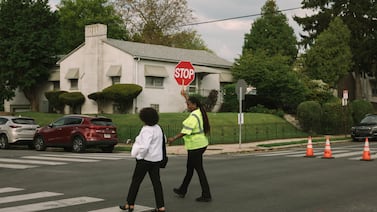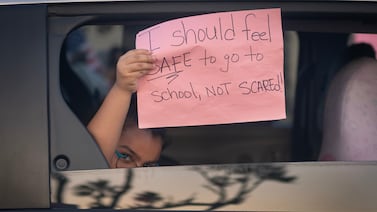The current pandemic has delayed Aurora’s plan for moving, merging, opening, and closing schools to accommodate shifting enrollment.
Officials who have been mapping out options with community groups had expected to present a plan to the school board this spring. But now they don’t know how the growing economic recession will change the population of Aurora and enrollment in district schools.
The plan known as Blueprint APS had been in the works for more than two years and was intended to help make decisions about schools that should merge, schools that might be put to a different use, and new schools that could locate in the part of the district that is expanding.
Aurora has been experiencing uneven shifts, with low-income families leaving the western part of the city bordering Denver, and growth in the east, where new homes have been built.
But the coronavirus has made planning difficult for all Colorado school districts.
Josh Hensley, Aurora’s planning coordinator, said it’s too early to know whether enrollment in Aurora Public Schools will continue to decline, or if development projects planned in the east will still move forward.
Evidence points in opposite directions, he told the school board this week.
Developers have told school leaders they remain optimistic. City officials said no projects have been suspended yet.
Some school leaders said they’ve heard anecdotally that families are leaving the district. Much of Aurora’s population is employed in some of the hardest-hit job sectors, Hensley said.
“Most of the growth that has occurred, to the extent that we’ve had new population and enrollment growth in the metro area, has been from families moving in to take advantage of the strong Colorado and Denver job market,” Hensley said. “If there’s no longer that draw in the future, that could potentially impact the number of students we will serve.”
But Hensley also pointed out that Aurora once attracted families seeking affordable alternatives to Denver and other communities. That could be the case again, he said.
Changes in either direction could affect the district’s building recommendations. Other factors that could play a role are budget considerations and health guidelines for reopening schools.
The district had already discussed how expensive it can be to run small schools as enrollment declines. Now school districts are facing huge, previously unexpected budget cuts, and some are already looking at selling unused buildings.
Health guidelines, specifically those limiting how many people may be in a room at the same time, are affecting how districts plan to reopen schools. As other district leaders have noted, districts may need all the building space they can get to be able to spread out students when they return to buildings. Aurora has not released details of its fall plans, but is working with the other metro area districts.
So far, Aurora leaders are proposing three plans depending on how many students enroll this fall.
Generally, the district would craft recommendations from August to December, but if enrollment is significantly lower than expected, the district would have to convert more schools or parts of schools than expected for non-classroom use.
In that scenario, the district may also speed up those changes, potentially closing and merging schools by fall of the 2021-22 school year. The district may also start the process to identify more school buildings, in areas not yet under consideration, that need to be repurposed.
The district also might speed up or slow down plans for building a new school and for identifying a location for it, depending on enrollment changes.






